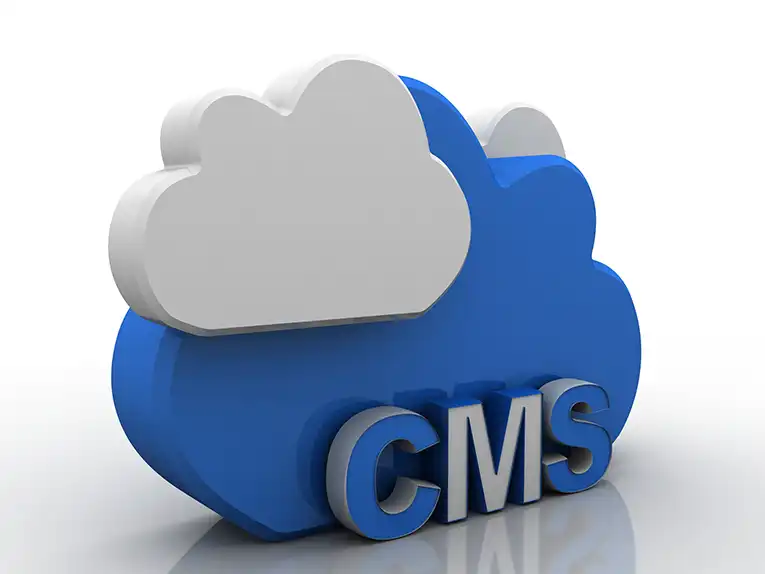Elastic Scalability: What It Is, And How CrafterCMS Does It

Sara Williams

Before cloud computing became a reality, enterprise organizations had to rely on expensive data centers filled with servers to host everything. While growth was welcomed, business leaders knew that they also needed to weigh the costs accrued due to that growth. If they were incapable of handling it themselves, growth would become a burden more than a blessing.
Fast forward to today, businesses can rely on cloud providers such as Amazon Web Services (AWS) to provide them with all of the tools they need to deploy their operations to the cloud. Now they can leverage the cloud for reduced costs, increased security, flexibility, and of course, scalability. According to IDG's Cloud Computing study, only 8% of respondents rely on completely on-premise solutions and conduct none of their IT operations in the cloud.
Still, even with the benefits of the cloud, organizations need to consider how they will handle the need to scale and increased performance requirements as they grow. These organizations need to be built on the proper infrastructure that provides them with the scalability and elasticity they require today and in the future.
In this article, we'll take a look at elastic scalability, explaining what it is and how companies can leverage it to their advantage with the proper infrastructure. We’ll also explain how a scalable CMS can provide that infrastructure and the benefits of having one.
Scalability vs. Elasticity
Two terms in cloud computing often used interchangeably but that are, in fact different, are scalability and elasticity.
Elasticity is the ability of a system to manage available resources based on the current workload requirements. Scalability refers to the system's ability to scale and handle increased needs while still maintaining performance. Essentially, elastically relates to proper resource allocation, and scalability relates to system infrastructure design.
Elasticity is essential when there are sudden spikes in activity, or there is an increase in demand. For businesses with large spikes in web traffic and other forms of dynamic workloads, having elasticity is critical. Scalability enables you to add new elements to existing infrastructure to handle a planned increase in demand. Whereas elastically allows you to handle varying demand loads, scalability allows you to increase resources as needed.
Because a system is elastic, that doesn't mean it is also scalable. This is why organizations need to rely on infrastructure systems that offer elastic scalability instead.
What Is Elastic Scalability? (And Why Do Organizations Need It?)
Elastic scalability is the ability to automatically add or remove infrastructure based on changing patterns in traffic. IT teams could use a load balancer such as Amazon Elastic Load Balancing to auto-adjust allocated resources in order to respond to these changes.
Elastic scalability enables better availability by ensuring that there is sufficient capacity to handle traffic demand changes. But it also provides improved cost management by only scaling as necessary and adding new features when needed.
So why does an organization need elasticity scalability and not simply elasticity or scalability?
Businesses need to be able to handle both planned and unplanned traffic spikes. For example, colleges and universities must be able to manage the student portal when grades or test results are released. Alternatively, a pizza company like Papa John's will need to adjust when they have a special promotion or during an event like the Super Bowl.
Consequently, organizations need a way to plan for this effectively and elastically scale with the right infrastructure. It's important that you have the right CMS architecture in place, such as the headless infrastructure of CrafterCMS.
The Benefits of an Elastically Scalable CMS
An elastically scalable CMS doesn’t just provide what a business needs today. It also offers the infrastructure for what they will need tomorrow. Some of the benefits of an elastically scalable CMS include:
Improved Scalability
As a business grows, more resources to cope with an increase in traffic will undoubtedly be required. An elastically scalable CMS provides the infrastructure to plan for and cope with these changes so that there is no degradation of performance, and certainly no downtime or lost revenue.
Enhanced Elasticity
An elastically scalable CMS allows enterprises to scale and maintain peak performance even as conditions change, such as when there is a massive spike in traffic due to customers bombarding a website due to a promotion for an e-commerce site, or a viral news story for a media site or enterprise site.
Future-Proof
An elastically scalable CMS built on headless architecture is essentially future-proof. It provides companies with the content management capabilities they need for today’s modern landscape. Yet it also has the API-first connectivity required to integrate new systems and leverage new technologies and digital channels as they arise.
Using Crafter Engine for Elastic Scalability
To handle the content requirements and digital experience demands being placed on organizations today, they need a CMS that can provide elastic scalability. For a platform to be elastically scalable, it needs to be cloud-native, stateless, and serverless with no database.
Crafter Engine provides the high-performance content delivery services required for today's modern web and mobile applications. When businesses need enhanced performance and scalability, it comes down to the CMS's architecture. Organizations need to rely on replication-based infrastructure at the data layer as workarounds when they have the wrong architecture.
Crafter Engine allows you to render dynamic and personalized content with millisecond response times. By leveraging an in-memory database and Elasticsearch, CrafterCMS has the foundation to build a scalable and globally distributed infrastructure.
With easy container orchestration and Kubernetes support, CrafterCMS provides everything a global enterprise needs for elastic scalability, enabling you to launch new servers anywhere worldwide where CrafterCMS can start delivering content.
Automatic scaling is facilitated through Kubernetes by automatically detecting traffic spikes. The platform can then be scaled back down after these spikes subside. The result is no database and no complicated infrastructure.
For enterprises that need personalized, localized, and omnichannel content at scale, CrafterCMS provides everything you need for your dynamic content without forcing you to rely on complicated database structures that may include performance issues or potentially higher costs.
Elastic Scalability and Dynamic Content Delivery with CrafterCMS
Businesses today can leverage the cloud and capitalize on decreased costs, faster launches, and easier collaboration. However, when it comes to delivering dynamic and engaging content experiences, they must leave nothing to chance.
CrafterCMS provides the elastic scalability necessary to handle traffic spikes without incurring high costs for capacity that won't be required later. With its shared-nothing architecture, Crafter Engine (the dynamic content delivery subsystem of CrafterCMS) provides global topology support that scales automatically, and elastically.
However, you don't just need to handle spikes at lower costs. You also need the ability to deliver omnichannel content across various channels with ease. And provide marketers and developers with the tools they need to create, delivery, and continually optimize those experiences.
CrafterCMS's headless+ architecture facilitates these experiences by separating the content authoring and content delivery systems. It also provides developers with an API-first approach that allows them to easily manage, integrate and deliver content to any front-end interface. Marketers aren't left out in the cold either, like with other headless systems. Instead, they get an easy-to-use interface for creating and editing content, drag & drop experience building, WYSIWYG editors, and in-context preview that make content creation for any digital channel a breeze.
Ready to get started using CrafterCMS? Discover more about Crafter's architecture and capabilities by reading our White Paper: Building and Optimizing Multi-Channel Digital Experiences.
Related Posts

Navigating the Future of Digital Experiences: A Deep Dive into Emerging Trends

Amanda Jones

Building Personalized Digital Experiences for a Cruise Liner

Sara Williams

CrafterCMS Wins More G2 Awards Spring 2024

Amanda Lee

What Is a Cloud CMS? (Unlocking the Benefits of a CMS in the Cloud)

Sara Williams
Related Resources
-

Personalized Digital Experiences for a Cruise Liner
Webcast
-

Introducing CrafterCMS v4.0
Webcast
-

Modernizing Video Delivery and Content Management at CPAC, A Canadian Nationwide Broadcaster
Webcast
-

AI-based Media Asset Management with AWS Rekognition and CrafterCMS
Webcast
-

Building React Apps on a Headless CMS
White Paper





